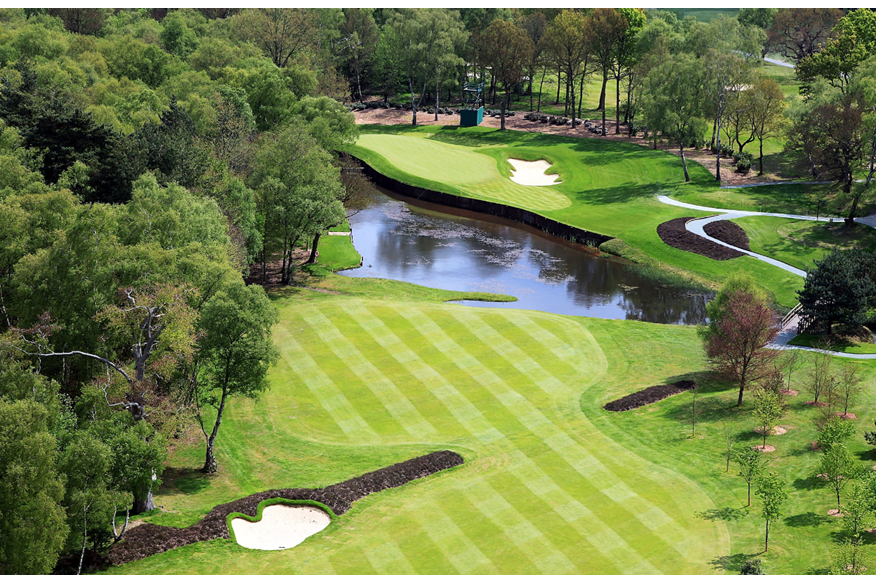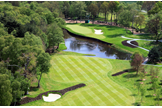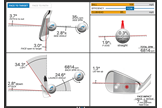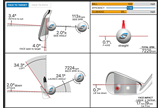Ironplay: Where amateurs go wrong
Last updated:
Ironplay: Where’s the problem? The stats show us where amateurs go wrong
Since 2014, the Arccos shot-tracking system has given the club golfer the opportunity to analyse and understand their performance like never before.
Individual sensors screwed into the butt of each club send data to your smartphone, and work with your phone’s GPS system to record and chart your performance with each club and shot.
Arccos central stat-gathering has stockpiled data from hundreds of thousands of iron shots, hit by thousands of UK amateur golfers of all standards, to create a comprehensive picture of where we go right… and wrong.
Until you use the system to record your own, personal stats, use this as a guide to target your improvement.
2019 Irons: Rated by forgiveness
1. How many greens do we actually hit?
Arccos data can deliver this information either by club or ability. The stats show a truly consistent drop as the handicap level rises, revealing just how important hitting greens is to your score.
Similarly, our percentage rises as the club gets shorter, though the overall picture – just one in three greens hit with a 6-iron and not even one in two with a wedge – shows clear room for improvement.
By Club:
4-iron: 28.48%
5-iron: 30.29%
6-iron: 33.87%
7-iron: 38.08%
8-iron: 42.69%
9-iron: 46.85%
PW: 49.32%
By Handicap:
0-5: 46%
6-10: 39%
11-15: 33%
16-20: 27%
20+: 22%
2. Long or Short?
Surely the most telling stat, the number of misses short compared to long paints a sorry picture for how many of us are falling foul of golf ‘s most heinous crime. While only one approach in 20 goes through the green for all handicap levels, longer-handicappers leave almost every other iron shot short. Even at 11-15-handicap level, one in three shots fails to reach the green. In terms of the club, we get slightly better as the club gets shorter… but we are still leaving one in four 9-irons short of the green, and more than one in three 5-irons.
By Club:
4-iron: 4.6% (long) 36.22% (short)
5-iron: 4.21% (long) 36.03% (short)
6-iron: 4.72% (long) 31.48% (short)
7-iron: 4.83% (long) 28.73% (short)
8-iron: 5.14% (long) 25.52% (short)
9-iron: 5.37% (long) 24.61% (short)
PW: 6.51% (long) 23.5% (short)
By Handicap:
0-5: 5% (long) 24% (short)
6-10: 5% (long) 28% (short)
11-15: 5% (long) 34% (short)
16-20: 5% (long) 41% (short)
20+: 5% (long) 48% (short)
3. Left or Right?
One of the more surprising sets of stats, green misses left and right appear almost equal when assessed by ability; there is not one single handicap level that dramatically favours left or right misses. On the face of it this suggests a simple lack of clubface control among amateurs, but it is also partly explained by the club-by- club data, which shows a prevalence of right misses with the longer irons and left misses with shorter ones. This apparently contradictory state of a airs can perhaps be put down to the out-to-in swing shape supposedly used by 85% of club players sending the ball left, with only the straighter-faced clubs able to apply a spin axis that sees it curve back to the right.
By Club:
4-iron: 13.78% (left) 16.92% (right)
5-iron: 12.82% (left) 16.65% (right)
6-iron: 13.34% (left) 16.6% (right)
7-iron: 13.13% (left) 15.24% (right)
8-iron: 13.51% (left) 13.14% (right)
9-iron: 12.93% (left) 10.23% (right)
PW: 11.88% (left) 8.78% (right)
By Handicap:
0-5: 12% (left) 13% (right)
6-10: 14% (left) 14% (right)
11-15: 13% (left) 14% (right)
16-20: 12% (left) 15% (right)
20+: 12% (left) 13% (right)
Conclusion?
We don’t hit the ball far enough! Coming up short comprises the lion’s share of missed greens. Clubbing up is an obvious answer, but so too is developing your ability to make solid contact.
Why you need to work on your strike
Every golfer knows instinctively the value of a solid, centred iron strike. Not only does it send that wonderful feeling from your hands directly into your heart; it also delivers a different sound and glorious feeling of effortless power. But what difference does it actually make to your shot?
To find out, we enlisted the help of a state-of-the-art ball-tracker in the form of Foresight’s GC Quad. Launched in early 2017, GC Quad uses four high-speed cameras to capture, with indecent accuracy, every possible detail of the collision between clubface and ball. GC Quad expert Justin Sandler captured two impacts – similar in every aspect other than strike point. Here, he explains the key differences.
The difference between a slight heel strike and a clear toe strike equated to a very costly loss of 6mph in ball speed and seven less yards.
Figure 1: Good Strike
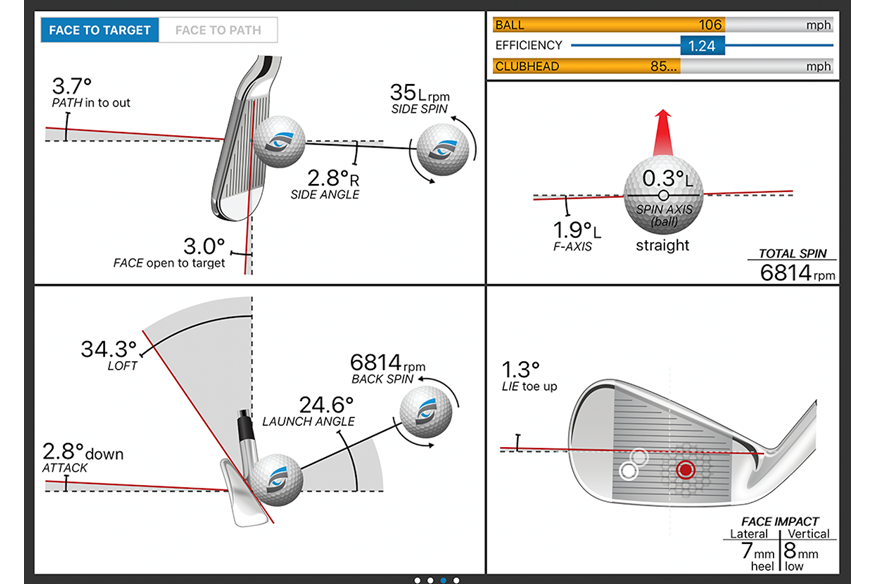
Figure 2: Poor Strike
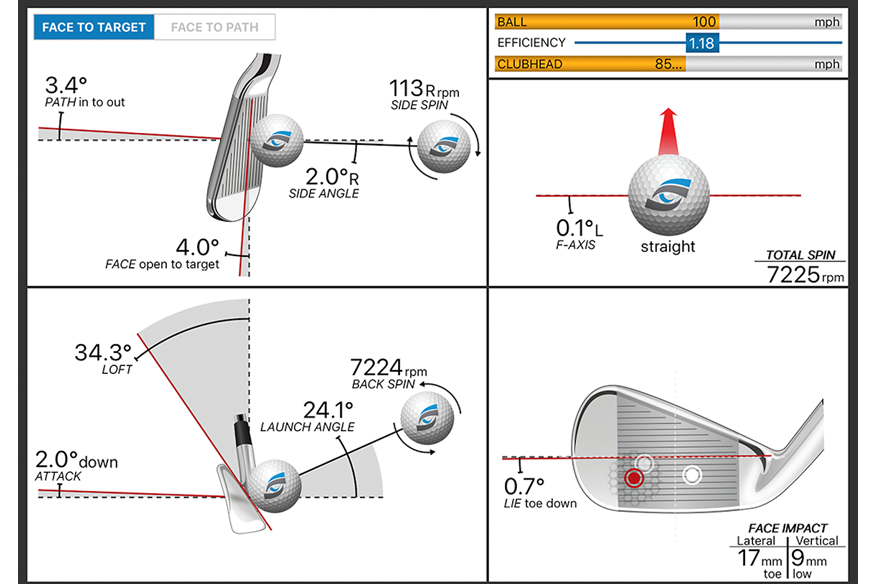
Six mph, Seven yards
Both of the above graphics show an 8-iron impact from a decent single-figure handicapper. In both cases, the clubhead speed was 85mph. Attack angle and path are similar. The biggest difference is the strike point. On the left we have a reasonably solid shot, just slightly into the heel of the face; on the right we have a clear toe strike, the impact point (red dot) 17mm away from the middle of the face. You can see the difference this made in ball speed – 100mph as opposed to 106mph. That equated to a loss of seven yards, 134 against 141 – easily enough to find the bunker short of the green instead of the putting surface itself.
Spin rises as the strike point lowers
The ideal spin rate for an 8-iron at this swing speed is around 6,500rpm. The toe strike produced 7,224rpm of spin, with the better strike at 6,814. We can put this down to the fact the toe strike was also slightly lower in the face. As the strike moves lower the ball tends to spin more – indeed just one groove lower can add around 400rpm of spin. Getting your strike closer to the height of the crosshair on the clubface will give you a more optimal spin for distance. This explains why you can sometimes experience a distance jump on par-3s, where you can tee the ball up.
Attack angle – slightly down
It is impossible to prescribe a perfect attack angle for all golfers; it depends on an individual’s physiology and their method of delivering the club. However, it is key to avoid two extremes:
1: Too steep.
Upwards of 6-7 degrees down typically produces excessive spin and problems with path. If your tendency is to chop down, change your terminology from ‘downswing’ to ‘forwardswing’ or ‘throughswing’. After all, these terms are the opposite of ‘backswing’.
2: Too shallow.
If your attack is level to upward, you will encounter heavy contact, impact low in the face and poor energy transfer. Anything that splits those two extremes can work. This golfer’s attack angle – typically just 2-3degrees down – may be only a subtle descending strike, but is all you need to compress the ball.
Conclusion?
A quality strike gets you pin high. A solid strike hits the ball almost a club further than a miscue. Work on strike point to get the ball back to the hole more often.
